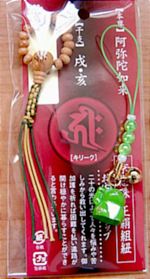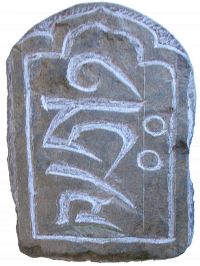Difference between revisions of "The Seed Syllable hrīḥ"
Jump to navigation
Jump to search
| Line 5: | Line 5: | ||
Pronounced /hriːh/ (IPA) | Pronounced /hriːh/ (IPA) | ||
| + | |||
| + | |||
| + | Other [[bījas]]: a | [[āḥ]] | [[dhīḥ]] | [[hūṃ]] | maiṃ | [[oṃ]] | tāṃ | traṃ | phaṭ | [[svāhā]] | | ||
==Examples== | ==Examples== | ||
| Line 19: | Line 22: | ||
{| | {| | ||
|- | |- | ||
| − | |[[File:Hrih-cellphone.jpg|thumb|250px|Picture of hrīḥ on a [[Japanese]] cellphone strap. Courtesy of [http://flickr.com/photos/26843515@N00/ solemn.still] ]] | + | |[[File:Hrih-cellphone.jpg|thumb|250px|Picture of hrīḥ on a [[Japanese]] cellphone strap. [[Courtesy]] of [http://flickr.com/photos/26843515@N00/ solemn.still] ]] |
|[[File:Stone_hrih2.jpg|thumb|250px|This carving of hrīḥ in the Tibetan script on a piece of stone was bought in Sikkhim by a friend for another friend.]] | |[[File:Stone_hrih2.jpg|thumb|250px|This carving of hrīḥ in the Tibetan script on a piece of stone was bought in Sikkhim by a friend for another friend.]] | ||
|} | |} | ||
Revision as of 17:41, 7 March 2016
hrīḥ is the seed syllable of Amitābha and so represents the qualities of the Buddha of the western quarter: chiefly meditation and compassion. In Tibet it is also associated with Avalokiteśvara or Chenresig.
Read my essay on the seed syllable hrīḥ.
Pronounced /hriːh/ (IPA)
Other bījas: a | āḥ | dhīḥ | hūṃ | maiṃ | oṃ | tāṃ | traṃ | phaṭ | svāhā |
Examples
| ह्रीः hrīḥ Devanāgarī |
||
Source






